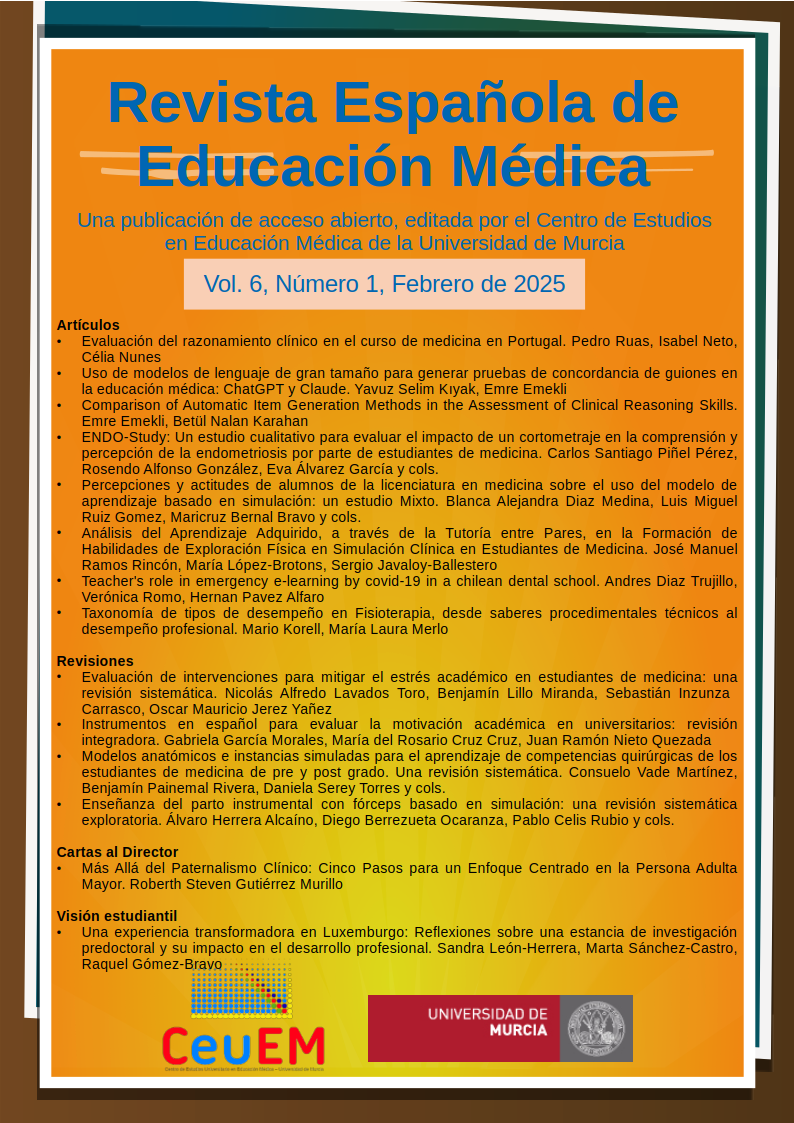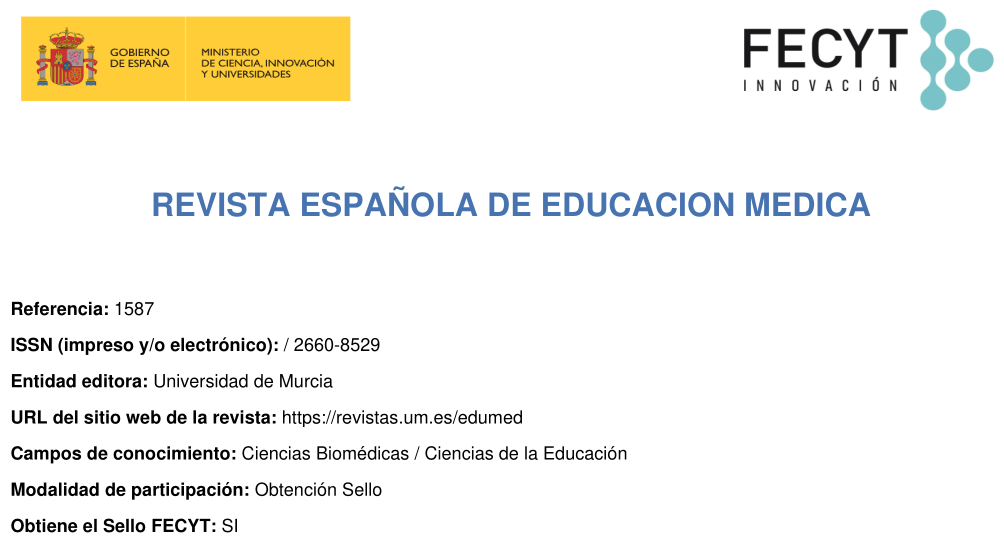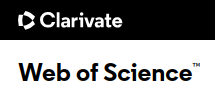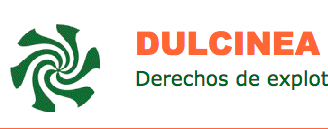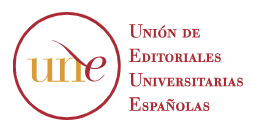Perceptions and attitudes of undergraduate medical students regarding the use of the simulation-based learning model: a mixed study
Abstract
The model of learning based on simulation in the teaching of medical schools is a tool that has contributed in recent decades to the acquisition of clinical skills and abilities in medical students, as well as communication skills and the doctor-patient relationship, all of which help to have an optimal development of when performing medical procedures with patients, thus avoiding iatrogenesis and medical malpractice. A little evaluated aspect is the perceptions and attitudes that students have towards the simulation model, which can help to understand how the experience of the model is in undergraduate medical students. Methods: A study with 354 students from the 1st to 9th semester of medicine from UVM Zapopan indicates that information on how they evaluate their experience with the model, 35 of these participants were selected to perform a semi-structured interview to deepen their perceptions and attitudes. Results: 83 percent identify the model of learning based on simulation and consider it also of high impact for their training, 8 of 10 respondents report having greater self-confidence, and 81 percent improve their clinical skills. From the qualitative interviews, relevant topics identified are the following: experiences in classes, learning, development of self-confidence, advantages, limitations, and suggestions -with positive evaluation-. However, the perception is ambivalent in self-confidence. Conclusion: the transition to the model of learning based on simulation is well and achieves adequate development of competencies.
Downloads
Metrics
-
Abstract521
-
pdf (Español (España))298
-
pdf298
References
Dávila-Cervantes A. Simulación en educación médica. Investigación en educación médica. 2014, 3(10), 100-105. 10.1016/S2007-5057(14)72733-4.
Society of Simulation in Healthcare. About Simulation. https://www.ssih.org/About-SSH/About-Simulation
Selman-Álvarez R, Figueroa-Fernández U, Cruz-Mackenna E. et al. Inteligencia artificial en simulación médica: estado actual y proyecciones futuras. Rev Latinoam Simul Clin. 2023, 5 (3): 117-122. doi.10.35366/114035. https:// dx.doi.org/10.35366/114035.
Rognoni Amrein G, Benet Bertran P, Castro Salomó. et al. La simulación clínica en la educación médica. Ventajas e inconvenientes del aprendizaje al lado del paciente y en entorno simulado. Medicina Clínica Práctica 2024, 7, 2. https://doi.org/10.1016/j.mcpsp.2024.100459.
Castro A, Descarrega R, Parra S. et al. Las competencias profesionales de los titulados en medicina mejoran con la introducción de un programa de simulación pacientes estandarizados y MINIC-CEX.
Procedia Social and Behavioral Sciences. 2014, 196, 25-29. doi:10.1016/j.sbspro.2015.07.005.
Wang S, Ren X, Ye J. et al. Exploration of simulation-based medical education for undergraduate students. Medicine. 2021, 100:20. doi: 10.1097/MD.0000000000025982.
Rodríguez-Díez MC, Díez-Goñi N, Beunza-Nuin JJ. Et al. Confianza de los estudiantes de medicina en el aprendizaje de la exploración obstétrica con simuladores. An Sist Navar. 2013, 36(2), 275-280. https://dx.doi.org/10.4321/S1137-66272013000200010.
López-Aráoz A. Rol e importancia de la simulación en la educación médica y broncoscópica (La simulación en la educación médica). Revista Americana de Medicina Respiratoria. 2014, 14(4), 362-364.
Kerrigan N. Simulación ¿una necesidad en el entrenamiento para la cirugía laparoscópica colorectal?. Rev Chil Cir. 2017, 69(6), 508-512. http://dx.doi.org/10.1016/j.rchic.2017.06.004
Carranza-Alcántar MR. Enseñanza y aprendizaje significativo en una modalidad mixta: percepciones de docentes y estudiantes. RIDE. Rev. Iberoam. Investig Desarro. Educ. 2017, 8(15), 898-922. https://doi.org/10.23913/ride.v8i15.326.
Juguera Rodriguez L, Díaz Agea JL, Pérez Lapuente. et al. La simulación como herramienta pedagógica. Percepción de los alumnos de grado en enfermería en la UCAM (Universidad Católica San Antonio de Murcia). Enfermería global. 2014, 13(33), 175-190.
Rodriguez Gonzalez AM, Martinez Cervantes EA, Garza Garza GG. et al. Satisfacción en simulación clínica de estudiantes de medicina. Educación Médica Superior. 2021, 35(3), e2331.
Corvetto M, Bravo MP, Montaño R. et al. Simulación en la educación médica una sinopsis. Rev Med Chile. 2013, 141, 70-79. http://dx.doi.org/10.4067/S0034-98872013000100010.
López Sánchez M, Ramos Lopez L, Pato López O. et al. La simulación clínica como herramienta de aprendizaje. Cir May Amb. 2013, 18(1), 25-29.
Weller JM, Nestel D, Marshall SD. et al. Simulation in clinical teaching and learning. MJA. 2012, 196(9), 1-5. doi: 10.5694/mja10.11474.
Primiciani N, Murphy L, Dephoure S. et al. Simulation as an educational tool to teach emergency medicine residents about bias. Canadian Journal of Emergency Medicine. 2024, 26, 395–398.
doi: 10.1007/s43678-024-00679-3.
Camacho-Zuñiga EM, Galván-Estrada M, Chávez-De La Rosa D. et al. Impacto de la simulación clínica en el nivel de confianza para evaluar pacientes en es estudiantes de Medicina. Simulación Clínica. 2019, 1(3), 129-133. doi 10.35366/RSC193C.
-Ramos G, Botero DA. Percepción de la simulación como didáctica en la enseñanza de hemorragia postparto en el Grado de Medicina. Rev Esp Edu Med. 2022, 1, 31-38; doi: 10.6018/edumed.501861.
Valencia Castro JL, Tapia Vallejo S, Olivares Olivares SL. La Simulación clínica como estrategia para el desarrollo del pensamiento crítico en estudiantes de medicina. Inv Ed Med. 2019, 8(29), 13-22. https://doi.org/10.1016/j.riem.2016.08.003.
Chávez de la Rosa D, Tass Rosado JD, Villareal Del Valle LI. et al. Simulación clínica y dimensiones de pensamiento crítico en estudiantes de medicina de una universidad privada. Inv Ed Med. 2020, 9(7 ), 70-77. doi.org/10.22201/fm.20075057e.2020.36.20244.
Copyright (c) 2024 Servicio de Publicaciones de la Universidad de Murcia

This work is licensed under a Creative Commons Attribution-NonCommercial-NoDerivatives 4.0 International License.
The works published in this magazine are subject to the following terms:
1. The Publications Service of the University of Murcia (the publisher) preserves the economic rights (copyright) of the published works and favors and allows them to be reused under the use license indicated in point 2.
2. The works are published under a Creative Commons Attribution-NonCommercial-NoDerivative 4.0 license.
3. Self-archiving conditions. Authors are allowed and encouraged to disseminate electronically the pre-print versions (version before being evaluated and sent to the journal) and / or post-print (version evaluated and accepted for publication) of their works before publication , since it favors its circulation and earlier diffusion and with it a possible increase in its citation and reach among the academic community.

